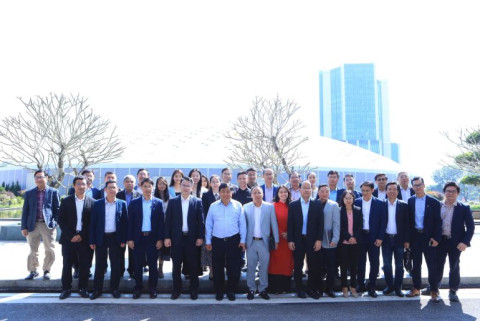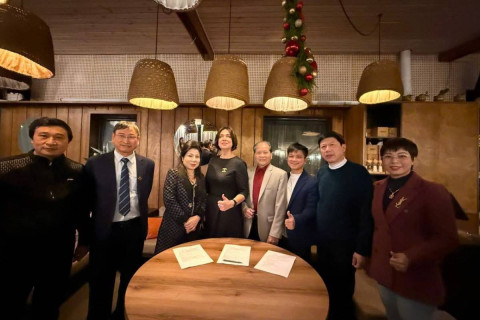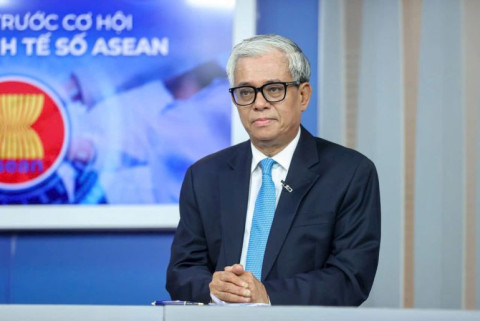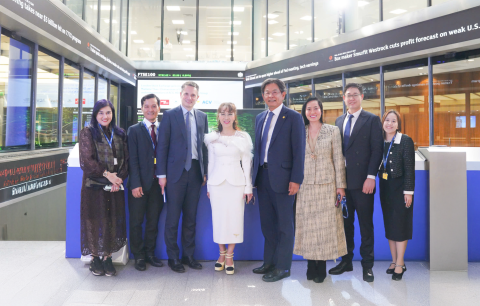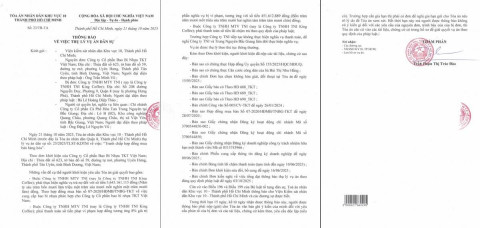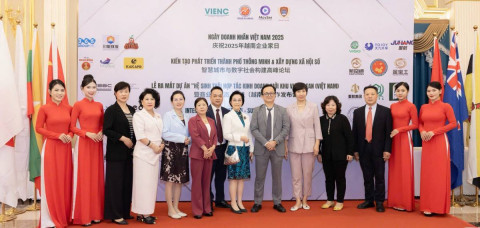Preserving and Developing Traditional Crafts in Hanoi: "Convergence - Crystallisation - Dissemination"
- 177
- Business
- 21:52 19/12/2023
DNHN - Over more than 1,000 years of civilisation, Hanoi has consistently been the country's most significant cultural hub, boasting both tangible and intangible cultural creations.
Hanoi, known as the "Land of Outstanding People," is a fascinating city with 36 streets and well-known traditional crafts that have been captured in poetry and history. Hanoi has laid the groundwork for a rich cultural legacy as a city where hundreds of trades come together. The unique appeal of Hanoi's traditional crafts has persisted despite numerous ups and downs as well as historical occurrences, making them unparalleled elsewhere.
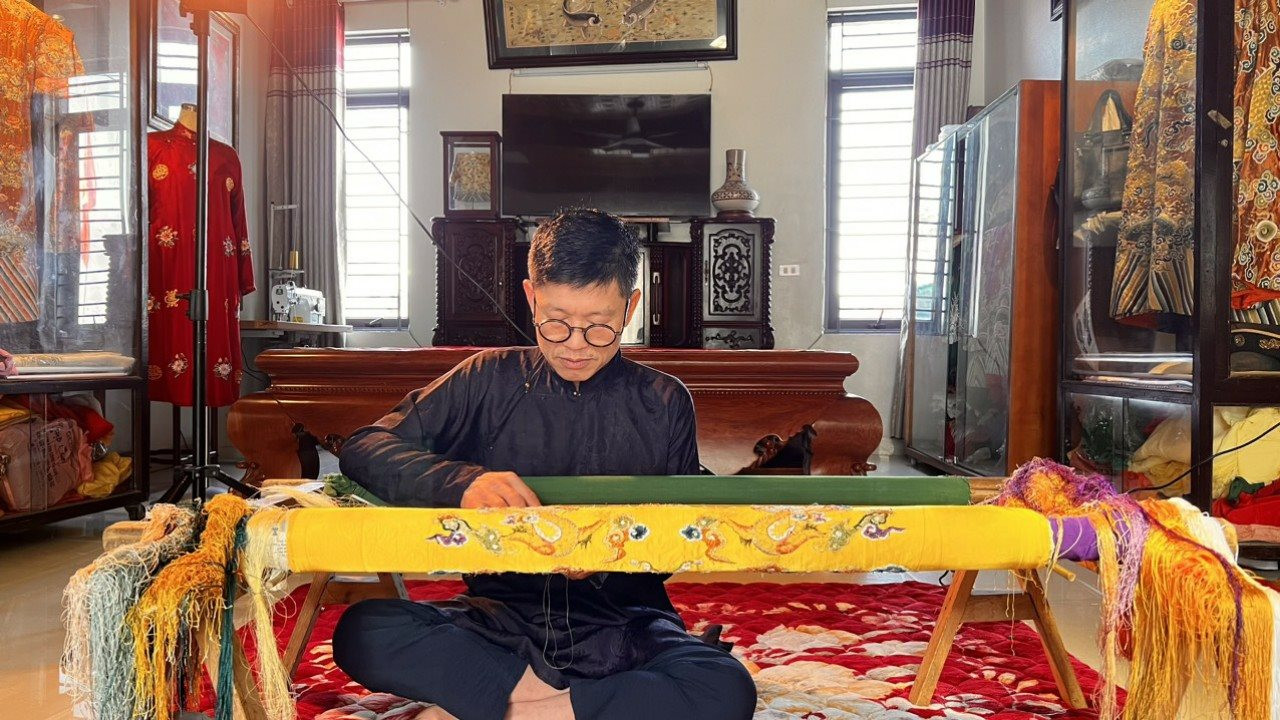
Each product has a profound tale embedded in it, and together, their rich history and skill have allowed these crafts to successfully infuse the most exquisite cultural values in the hearts of every Vietnamese person. As of right now, Hanoi, the country's capital, is home to around 1,350 craft villages and villages with crafts, which accounts for 47 of the 52 traditional crafts practised across the country. Located in 23 districts, towns, and cities, the city currently has 322 recognised traditional artisan villages and crafts. Out of these, 274 have been designated as Craft Villages, and 48 have been designated as Traditional Craft Villages. These 274 and 48 villages represent six out of the seven craft groups: (1) processing and preserving agricultural, forestry, and aquatic products; (2) producing handicrafts; (3) producing wooden furniture, rattan and bamboo products, ceramics, glass, textiles, fibres, lace embroidery, weaving, and small machinery; (4) producing and trading ornamental plants and animals; (5) processing and preparing raw materials for rural industries (16 craft villages); and (6) offering services for production and the lives of rural residents.
Every craft village has its particular character and produces exquisite and unique goods that capture the spirit of Vietnamese culture. These craft villages produce a wide variety of goods, most of which are well-made and visually appealing. Certain products, like clothing, ceramics, lace, traditional textiles and embroidery, wooden furniture for consumer use and construction, mechanical goods, and processed agricultural and food items (cakes, noodles, candies, pork pies, square glutinous rice cakes, tea, etc.), have a competitive advantage in both domestic and foreign markets.
The capital city's efforts to preserve and develop traditional crafts must recognise the vital role played by the artisans and skilled labourers who have devoted their time, energy, and divinely endowed hands—day and night, year after year—to painstakingly bringing each piece to life and sharing with friends both domestically and abroad the essential messages of the craft villages. There are currently 303 artisans in Hanoi, comprising 256 male and 47 female artisans. The State has recognised 248 Hanoi artisans, 42 Excellent Artisans, and 13 People's Artisans. 38 dossiers have been submitted to the central level for the designations of People's Artisan and Excellent Artisan in 2023, while 46 dossiers are presently being reviewed for the title of Hanoi Artisan. These craftspeople act as the "locomotives" that keep the distinctive identities and customary cultural traits of the craft communities alive. They transmit customs and cultural identities to the following generation in addition to being competent labourers and mentors. Craft villages are growing, and this opens up a lot of jobs for working-age individuals as well as the elderly, crippled, and young people. The creation of artisan villages contributes to locals' income growth and the closing of the income gap for the impoverished in rural areas. In addition, the growth of craft villages strengthens ties within the community, advances customs and heritage, and conserves artistic originality, transferring it from one generation to the next.
The Hanoi People's Committee has annually directed specialised agencies to regularly coordinate with the media to promote craft villages, rural industries, collective economies, cooperative economies, household economies, and farms; preserve, conserve, and develop traditional crafts, craft villages, and villages with crafts; and enhance the competitiveness of products in the market. These goals include fostering production development, enhancing competitiveness, and increasing the added value of craft village products; supporting the development of craft villages to create jobs and increase incomes for local residents; and contributing to the socio-economic development of rural areas.
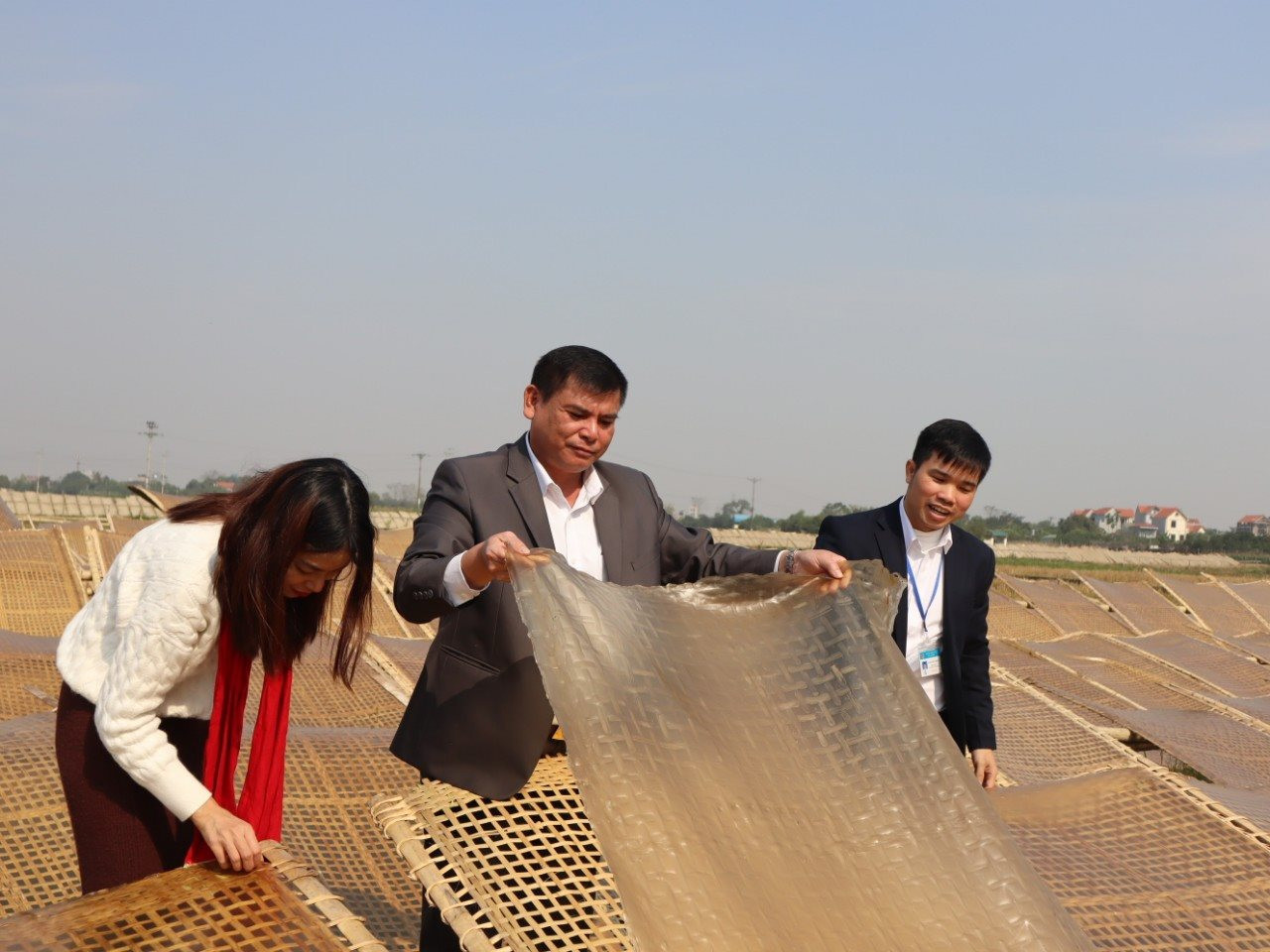
Hanoi regularly organises events, trade fairs, product weeks, competitions, and festivals, and participates in domestic and international trade fairs to honour craft village products. Furthermore, the city creates a playground and encourages artisans and skilled workers to exchange experiences to preserve and conserve the unique cultural characteristics of craft villages. All of these activities help to contribute to the preservation, conservation, and development of traditional crafts, craft villages, and villages with crafts, as well as to enhance the competitiveness of products in the market.
Artisans and skilled workers have poured their souls into their works to promote the historical and cultural legacies of the local people, along with innovative creations, through annual competitions on creative designs for typical craft village products and models in the capital. The result is a production that both preserves the nation's cultural identity and keeps up with modern domestic and international consumer and artistic trends.
The capital city of Vietnam, Hanoi, is referred to as the Land of Hundreds of Crafts because of its rich past. In craft villages, experiential tourism has emerged as a crucial avenue for global integration and economic growth. It is noteworthy to mention Bat Trang Ceramics, a traditional craft town renowned for its more than 500-year-old pottery. Many old ceramic artefacts from the Ly, Tran, Le, and Mac dynasties have been repaired by the skilled and informed ceramic artists of Bat Trang. To achieve the most harmonic balance in the ceramics' shape and colour, Bat Trang ceramics are made utilising exacting glazing and kiln-firing procedures.
Van Phuc Silk Village is known for its excellent silk items, which are among the oldest and greatest quality in Vietnam. The village features a variety of elegant and sophisticated patterns and themes. Van Phuc Silk Village is growing and turning into a popular tourist attraction where people may explore and discover the historical beauty of our forefathers.
The ancient handicraft town of Phu Vinh, known for its bamboo and rattan weaving, dates back to the middle of the 17th century. The community is well-known for its age-old technique of weaving bamboo using reed, bamboo, and bamboo as raw materials. Phu Vinh has created exceptional and distinctive bamboo and rattan products that are widely valued by both local and foreign tourists and are environmentally friendly thanks to the creative hands and inventiveness of the artisans.
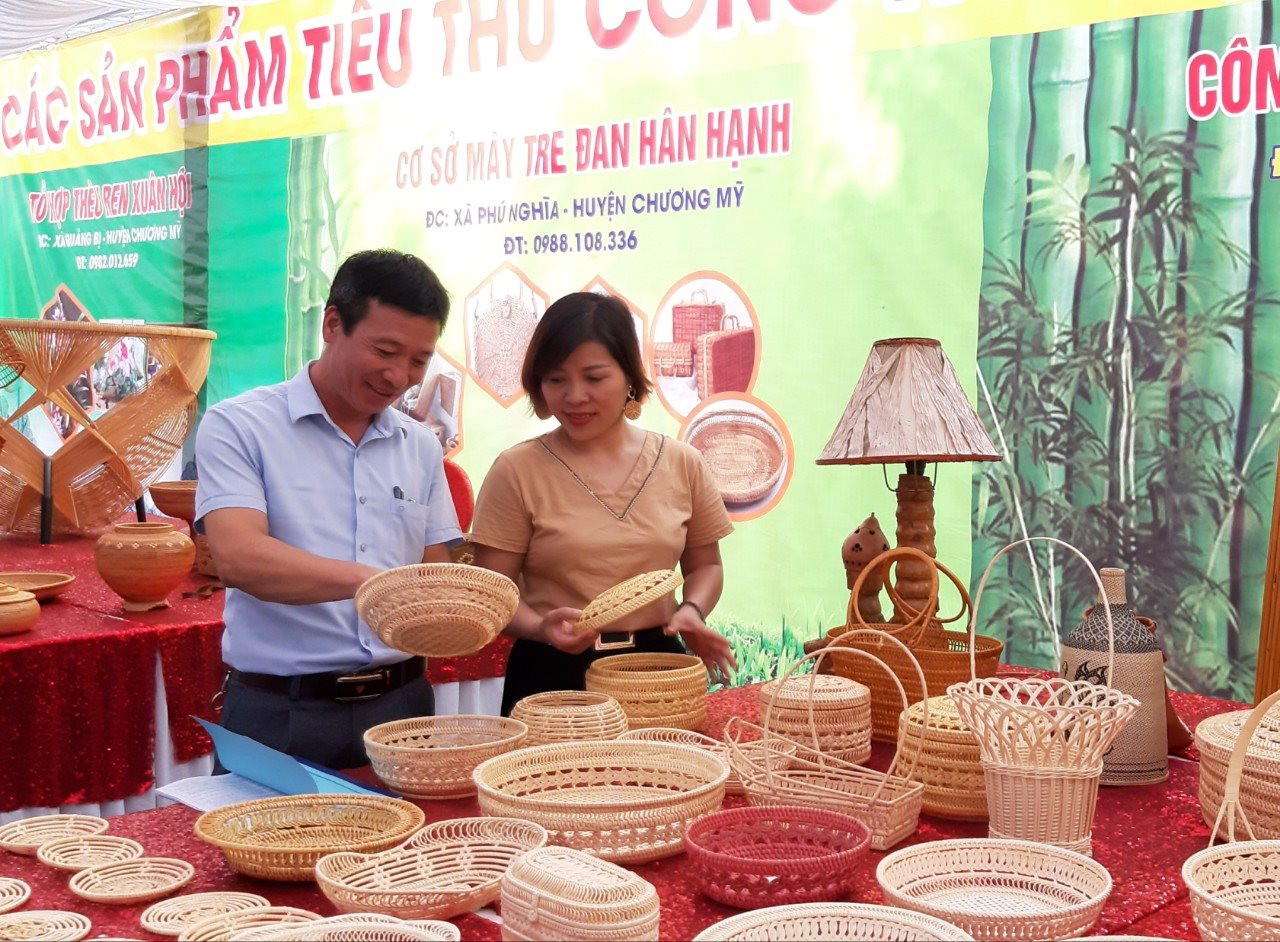
The lace and embroidered village of Quat Dong dates back to the seventeenth century. Initially, the primary tasks of the craft were to embroider various types of scarves and clothing for the royal court, as well as parallel sentences, banners, etc., to hang in temples and pagodas. But as time went on, the embroidery village expanded to include a wider variety of goods, including clothing, embroidered paintings, pillowcases, and more. The embroidered pieces are all painstakingly handmade by skilled artisans, creating one-of-a-kind, gorgeous goods with deep symbolic connotations.
The art of creating hats is well-known in Chuong Conical Hat Village. Vietnamese women were strongly linked with the conical hat a few centuries ago. They used it with long traditional dresses to accentuate their lovely and graceful features.
The village of Ha Thai lacquerware has been around since the 17th century. The village's sole product at the time was lacquerware, which was highly prized because there were so many skilled and gifted craftspeople in it. The settlement was dubbed the 'royal tribute' artisan village since its speciality at the time was creating goods for the royal court. The gold-lacquered village of Ha Thai saw substantial changes in the 1930s as a result of the East and West's dynamic of cultural interchange and evolution. Among the various colouring elements that the early Vietnamese artists at the Indochina Fine Arts College discovered were eggshells, snails, and bamboo piths. Notably, the addition of the grinding technique resulted in the creation of the distinctive lacquer technique, which is the product of the experienced labourers and artisans in the hamlet as well as their creative and gifted hands.
Apparently, the growth and preservation of traditional crafts are essential to the economic restructuring of suburban rural areas. They also support socio-economic development, raise incomes, enhance the material and spiritual well-being of rural residents, and contribute to the comprehensive and sustainable development of rural areas. Notably, throughout time, the revenue, production value, and export value of areas with craft villages have increased. About 70 craft villages have made significant contributions to local budgets with revenues ranging from VND 20 billion to VND 50 billion annually, about 20 craft villages have generated revenues exceeding VND 50 billion annually, and approximately 100 craft villages have generated revenues between VND 10 billion and VND 20 billion annually. Workers in craft villages often earn between VND 4 million and VND 5.5 million per month on average, which is significantly more than pure agricultural labourers. The wage of labourers varies based on the craft community. For instance, the average labour income per person in the bamboo and rattan weaving craft village is VND 11.2 million per month, whereas the average labour income per person in the fine art sculpture craft village is VND 10 million per month. Specifically, flower and ornamental plant craft villages have grown rapidly in recent years. Examples of these include the Phu Dong paper flower craft village, where the average labour income per month is 26 million; the white apricot flower craft village in An Hoa village, where the average labour income per month is 17 million; etc. Products from the craft village are exported to more than 40 nations and safe zones.
Hanoi's craft villages aim to be a part of the global network of creative craft cities to maintain and grow them. They also manufacture items that are connected to other nations and regions. For travellers from near and far, this has grown to be an indispensable location.
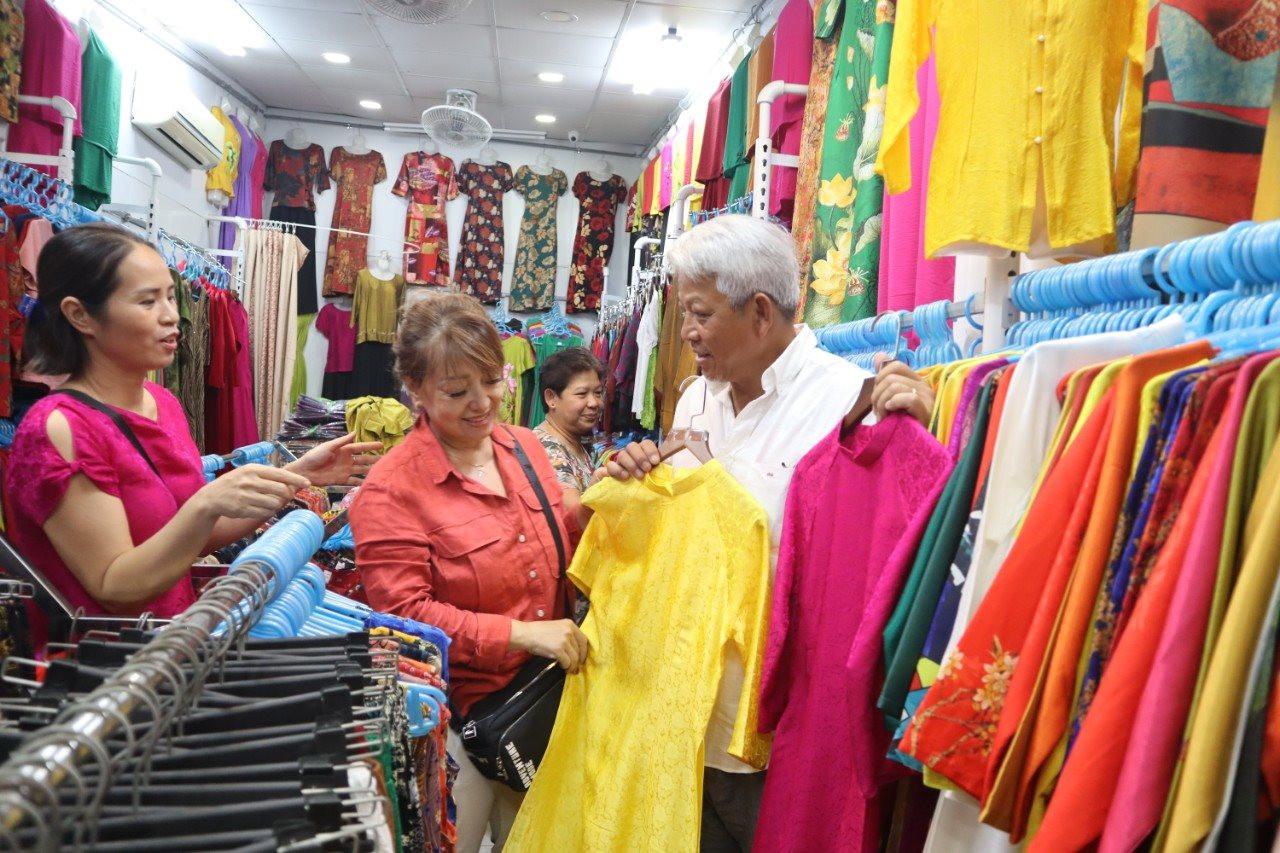
To effectively implement the programme to preserve and develop craft villages, the city will proactively coordinate with central units and domestic and international organisations. This will help raise awareness about the need for traditional craft villages to place a greater emphasis on innovation, design, and other aspects so that handicraft products can preserve the core cultural identities of the nation while also featuring groundbreaking improvements that suit the current trend of integration Under the terms of Decision No. 1058/QD-TTg, dated September 14, 2023, the Prime Minister approved and issued a strategy for expanding rural industries to 2030 with a vision to 2045.
The Vietnam Craft Village Conservation and Development Festival 2023 was first organised by the Hanoi People's Committee in collaboration with the Ministry of Agriculture and Rural Development from November 9 to November 12. This is a major event that aims to promote the admirable qualities of Hanoi's craft villages.
Nguyen Van Chi - Permanent Deputy Chief of Hanoi New Rural Coordination Office
Related news
- Connecting Leaders, Shaping the Future: Strategic Leadership Planning Meeting – CorporateConnections Hanoi A
- Sunlight - Unilever Vietnam Recognized for Outstanding Contributions to the National Initiative Supporting Women Entrepreneurs
- Deputy Prime Minister Nguyễn Chí Dũng: “The country’s major challenges weigh heavily on my mind — and we must resolve them together.
- Unitsky String Technologies signs cooperation agreements with three Vietnamese partners, opening a new direction for smart mobility and sustainable development
- When artists do business – livelihood is no poetry!
- Before the D‑day to abolish flat‑rate tax: Fear of technology and costs leave small traders struggling to adapt
- Vietnamese enterprises at a crossroads: the impact of a potential US–China deal
- "Digital technicians" must not be forgotten if Vietnam aims to meet its strategic goals
- HDBank: Impressive profit growth, leading in profitability and advancing international integration
- TNI King Coffee sued for over VND 5 Billion in unpaid debts
- VINASME and Jeonnam Technopark Sign MOU on technology cooperation, human resource training, and trade promotion
- Vietnamese entrepreneurs strengthen ASEAN connectivity in the digital iIntegration era
- Prime Minister: Vietnam aims to become a regional logistics hub
- Vietnam upgraded to Secondary Emerging Market by FTSE Russell
- Hanoi’s economy grows 7.92% in first nine months of 2025, FDI surges nearly threefold
- Vietnam’s strong gdp growth fails to ease labor market distress
- US tariffs on Brazil propel Vietnam’s pangasius into global spotlight
- VietLeap AI Accelerator launches: A strategic springboard for Vietnam’s AI startups
- CICON expands strategic alliances: A new step forward in Vietnam–Korea business connectivity
- What must Vietnamese enterprises do to maintain their position in the global supply chain?
Đọc thêm Business
Connecting Leaders, Shaping the Future: Strategic Leadership Planning Meeting – CorporateConnections Hanoi A
"Your network is your most powerful flowing asset. It generates value, multiplies opportunities, and accelerates your influence across borders."
Innovative ESG enterprise: Trạm Xe Việt startup proposes solutions to build a green mobility ecosystem
As Vietnam commits to achieving Net Zero by 2050 and tightens emissions standards, the transportation sector faces unprecedented pressure to transform.
Deputy Prime Minister Nguyễn Chí Dũng: “The country’s major challenges weigh heavily on my mind — and we must resolve them together.
On the morning of November 26, 2025, Deputy Prime Minister Nguyễn Chí Dũng chaired a high-level working session at the National Innovation Center (NIC) in Hòa Lạc.
Unitsky String Technologies signs cooperation agreements with three Vietnamese partners, opening a new direction for smart mobility and sustainable development
The signing ceremony took place in Minsk, Belarus, on November 28, 2025.
Before the D‑day to abolish flat‑rate tax: Fear of technology and costs leave small traders struggling to adapt
From 1 January 2026 the flat‑rate tax regime will be abolished. Small business households will be required to declare tax based on actual revenue. MISA supports the transition with technology to help micro‑merchants adapt smoothly and transparently.
Vietnamese enterprises at a crossroads: the impact of a potential US–China deal
As the world closely monitors every shift in US-China relations, emerging signals of a strategic agreement between the two global powers are raising hopes for global economic stability.
HDBank: Impressive profit growth, leading in profitability and advancing international integration
Ho Chi Minh City Development Joint Stock Commercial Bank (HDBank, stock code HDB) announced its consolidated profit before tax for the first 9 months of 2025 reached VND 14,803 billion, marking a 17% increase year-on-year (YoY).
TNI King Coffee sued for over VND 5 Billion in unpaid debts
On October 21, 2025, the People’s Court of District 10 in Ho Chi Minh City officially accepted a civil lawsuit concerning a commercial contract dispute between TKT Vietnam Plastic Packaging Joint Stock Company and TNI King Coffee Co., Ltd.
VINASME and Jeonnam Technopark Sign MOU on technology cooperation, human resource training, and trade promotion
On October 15, 2025, in Hanoi, VINASME and Jeonnam Technopark (Korea) signed an MOU to promote trade, advance technology transfer, and develop human resources between enterprises of both nations.
Vietnamese entrepreneurs strengthen ASEAN connectivity in the digital iIntegration era
On the occasion of Vietnam Entrepreneurs’ Day (October 13), an international event themed “Integration – Innovation – Sustainable Development” was solemnly held in Ho Chi Minh City.




